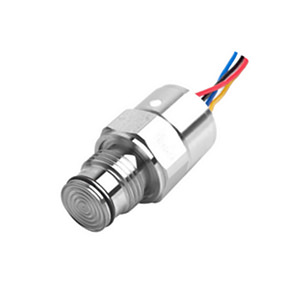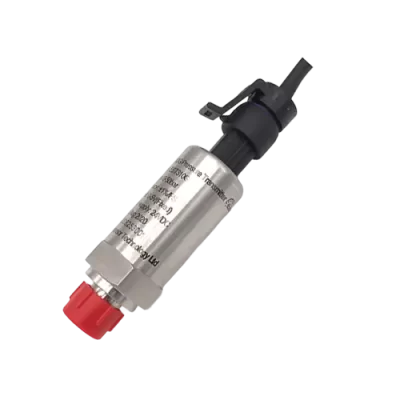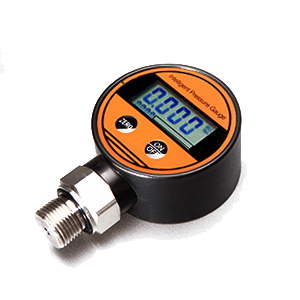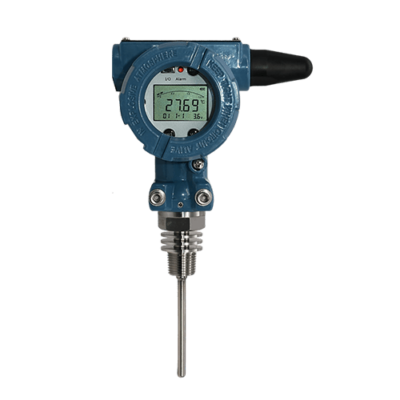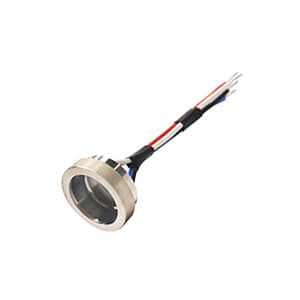When selecting a ceramic pressure sensor for your application, one of the key considerations is whether to choose an amplified ceramic pressure sensor or unamplified type. Each option has its own set of advantages and trade-offs, and the choice will depend on the specific requirements of your system. In this blog post, we’ll dive deep into the technical details of unamplified and amplified ceramic pressure sensor to help you make an informed decision.
Unamplified ceramic pressure sensor
Sensing Element
Unamplified ceramic pressure sensor typically uses piezo-resistive or strain gauge sensing elements that are directly fabricated onto the ceramic or SS316 diaphragm. These sensing elements generate a small electrical signal through Wheatstone bridge, typically in the millivolt range, in response to the applied pressure.
Output Signal
The output signal from an un-amplified ceramic pressure sensor is a raw, unprocessed voltage or current signal that directly corresponds to the applied pressure. This raw signal requires additional signal conditioning and amplification before it can be used by the control system or data acquisition equipment.
Applications
Unamplified ceramic pressure sensor s are often used in applications where the signal processing and amplification can be handled by the end-user’s own electronics or control system. They are generally more cost-effective compared to amplified sensors, as the signal conditioning and amplification circuitry is not integrated into the sensor itself.
Example Specifications:
- Output Signal: 0-100 mV
- Pressure Range: 0-100 psi (0-689 kPa)
- Accuracy: ±0.5% of full scale
Model recommendation
- ESS501: Monolithic Ceramic Pressure Sensor Cell
- ESS502: Flush Diaphragm Ceramic Pressure Sensor Cell
Amplified ceramic pressure sensor
Integrated Amplification
Amplified ceramic pressure sensor incorporate signal conditioning and amplification circuitry directly into the sensor housing or package. This integrated circuitry takes the raw, millivolt-level signal from the sensing elements and amplifies it to a higher-level, standardized output signal, such as 0.5-4.5V or 4-20mA or digital I2C.
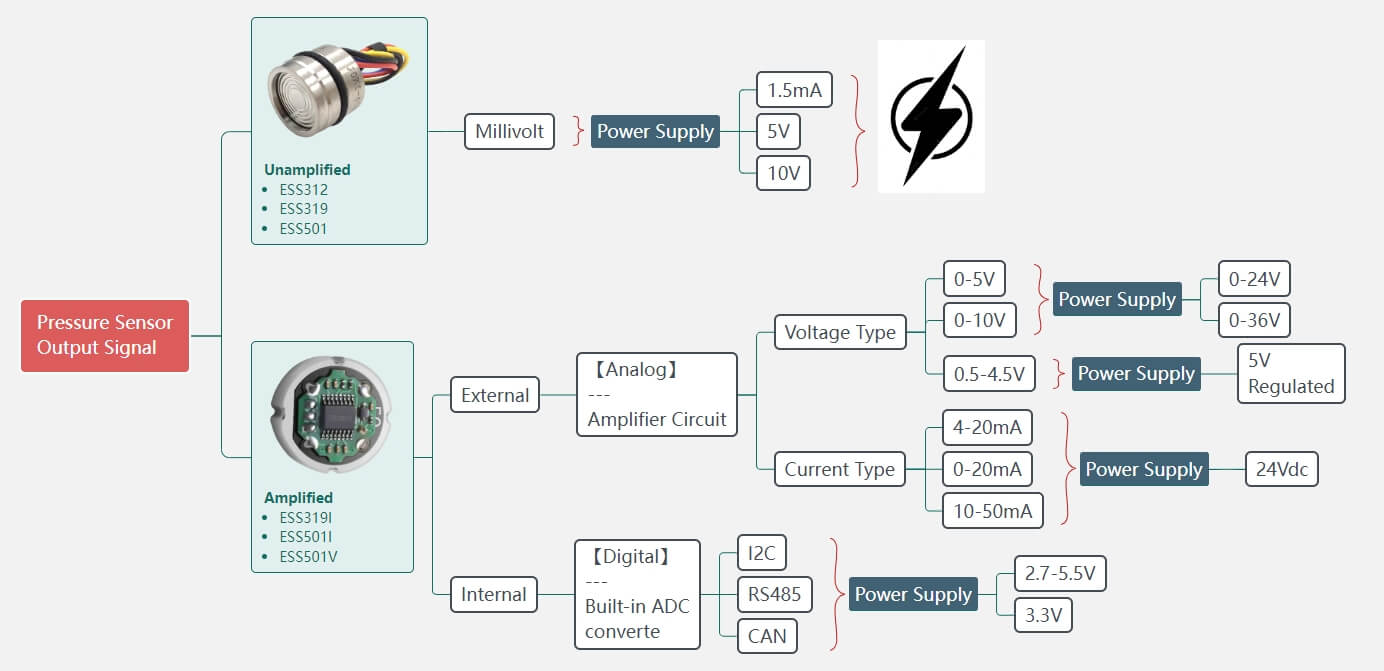
Output Signal
The output signal from an amplified ceramic pressure sensor is a pre-conditioned and amplified voltage or current signal 0.5-4.5V or 4-20mA or digital I2C., (we will discuss details of these types output signal in next section) which can be directly interfaced with control systems, data acquisition equipment, or other industrial automation devices. This eliminates the need for additional external signal conditioning and amplification, simplifying the system integration and wiring requirements.
Applications
Amplified ceramic pressure sensor is preferred in applications where the end-user requires a readily available, plug-and-play pressure measurement solution. They are particularly useful in applications where the sensor needs to be placed in remote or hard-to-access locations, as the integrated amplification and signal conditioning simplify the installation and interface with the control system.
Example Specifications:
- Output Signal: 4-20 mA/0.5-4.5V/I2C
- Pressure Range: 0-500 psi (0-3.45 MPa)
- Accuracy: ±0.25% of full scale
- Supply Voltage: 12-36 VDC
Model recommendation
- ESS501-I/V-IIV: Monolithic Ceramic Pressure Sensor Module
- ESS502-I/V-IIC: Flush Diaphragm Ceramic Pressure Sensor Module
Types of Amplified ceramic pressure sensor
Aa above mentioned, the amplified ceramic pressure sensor offer a significant advantage over their unamplified counterparts by integrating signal conditioning and amplification circuitry directly into the sensor package. This integration eliminates the need for external signal processing, simplifying the integration and wiring requirements for your industrial automation or control system. However, when it comes to amplified ceramic pressure sensors, there are different types of signal outputs to consider.
Voltage Output Amplified
Output Signal
- Voltage output amplified ceramic pressure sensor s provide a standardized voltage signal, typically in the range of 0-5V, 0.5-4.5V, 0-10V, or even ±10V.
- This voltage output signal is directly proportional to the applied pressure, allowing for easy interfacing with a wide range of control systems and data acquisition equipment.
- Check out details: How to decide which voltage output is good for me?
Advantages
- Voltage output signals are widely accepted and understood, making them easy to integrate into existing systems.
- Voltage outputs are generally less susceptible to noise and interference, ensuring reliable signal transmission over longer cable runs.
- Voltage-based sensors often have a higher input impedance, allowing for simpler and more cost-effective signal conditioning circuitry in the end-user’s system.
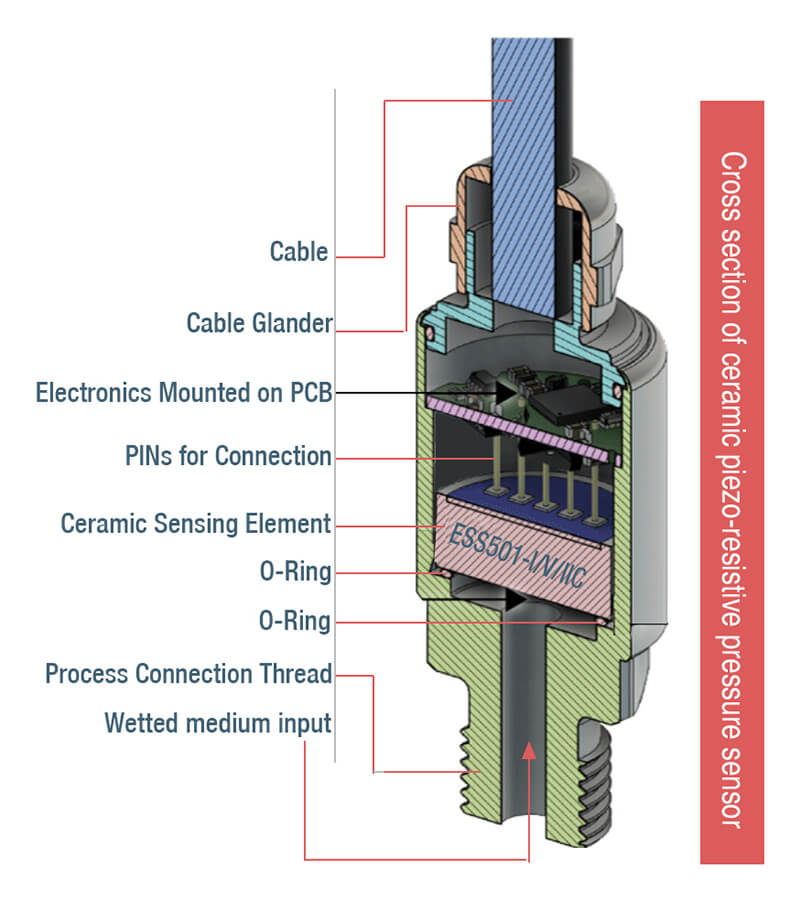
Current Output Amplified
Output Signal:
- Current output amplified ceramic pressure sensors provide a standardized current signal, typically in the range of 4-20 mA or 0-20 mA.
- This current output signal is directly proportional to the applied pressure, allowing for easy integration with a wide range of industrial control and monitoring systems.
- Check out details: How to decide which analog output is good for me?
Advantages:
- Current output signals are less susceptible to noise and interference, making them more suitable for applications with long cable runs or in electrically noisy environments.
- Many industrial control systems are designed to directly accept current-based sensor inputs, simplifying the integration process.
Digital Output Amplified
Output Signal:
- Digital output amplified ceramic pressure sensors provide a digital communication interface, such as I2C, SPI, or UART, to transmit the pressure measurement data.
- These sensors often include additional features like on-board temperature compensation and digital calibration, enhancing the overall measurement accuracy and reliability.
- Check out details: How to decide which I2C output is good for me?
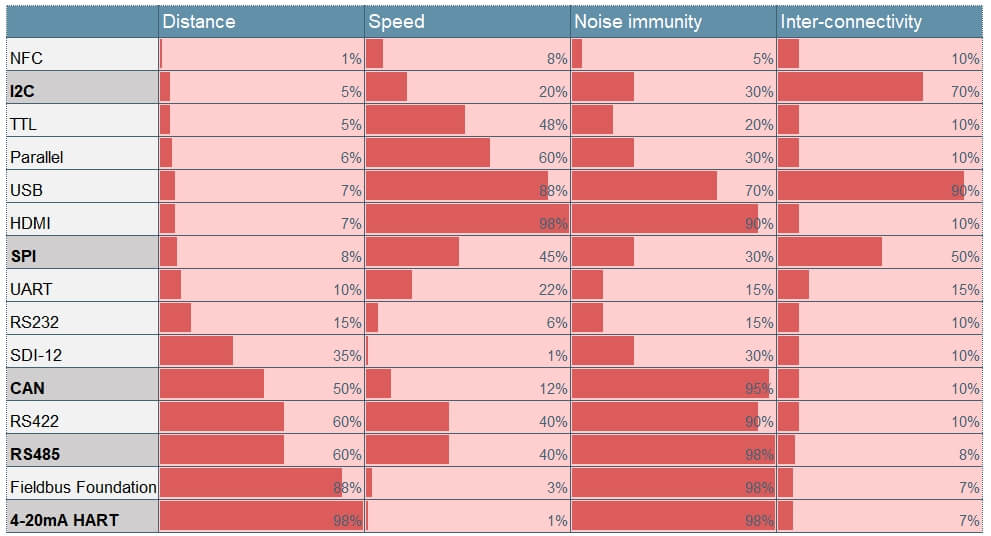
Advantages:
- Digital output signals allow for more advanced data processing and communication capabilities, enabling features like remote configuration, diagnostic information, and integrated temperature compensation.
- Digital interfaces facilitate easy integration with microcontrollers, industrial PCs, and other digital control systems, simplifying system architecture and reducing the need for analog-to-digital conversion.
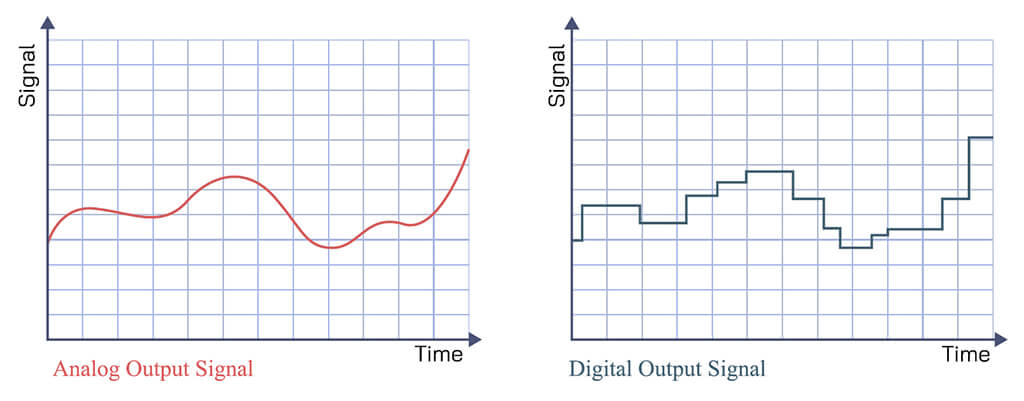
- Digital output sensors can provide higher resolution and precision pressure measurements compared to analog voltage or current outputs.
Amplified VS Unamplified: Technical View
Un-amplified ceramic pressure sensor s offer a cost-effective solution for many industrial and commercial applications, while amplified ceramic pressure sensor s offer a plug-and-play solution for industrial automation and control systems, providing integrated signal conditioning and amplification to simplify installation and system integration, but selecting the right type requires a deep understanding of the technical specifications and how they align with your system requirements.
In this section, we are planning to discuss the most critical factors to consider, in technical views, when choosing pressure sensor, with a focus on linearity and accuracy, environmental compatibility, and system integration considerations.
Linearity
Linearity is a crucial specification that describes the sensor’s deviation from a straight-line response.
For un-amplified ceramic pressure sensor s, linearity error can range from ±0.5% to ±2% of the full scale.
For example, an unamplified ceramic pressure sensor with a linearity error of ±0.5% of full scale and a pressure range of 0-100 psi (0-689 kPa) would have a maximum linearity deviation of ±0.5 psi (±3.45 kPa) across the entire pressure range.
For amplified ceramic pressure sensor s, linearity error is typically much lower than unamplified sensors, ranging from ±0.1% to ±0.5% of the full scale.
For example, an amplified ceramic pressure sensor with a linearity error of ±0.25% of full scale and a pressure range of 0-500 psi (0-3.45 MPa) would have a maximum linearity deviation of ±1.25 psi (±8.62 kPa) across the entire pressure range.
Accuracy
Accuracy encompasses the combined effects of linearity, hysteresis, and repeatability. Unamplified ceramic pressure sensors typically have an accuracy specification of ±0.5% to ±1% of the full scale.
For example, an unamplified ceramic pressure sensor with an accuracy of ±0.5% of full scale and a pressure range of 0-500 psi (0-3.45 MPa) would have a maximum accuracy error of ±2.5 psi (±17.2 kPa) across the entire pressure range.
Amplified ceramic pressure sensor s typically have an accuracy specification of ±0.1% to ±0.5% of the full scale.
For example: An amplified ceramic pressure sensor with an accuracy of ±0.1% of full scale and a pressure range of 0-100 psi (0-689 kPa) would have a maximum accuracy error of ±0.1 psi (±0.69 kPa) across the entire pressure range.
Operating Temperature Range
Un-amplified ceramic pressure sensor s are designed to operate within specific temperature ranges, which can vary from sensor to sensor. A typical temperature range for an unamplified sensor might be -20°C to +85°C (-4°F to +185°F).
On the other hand, amplified ceramic pressure sensors are designed to operate within specific temperature ranges, which can vary from sensor to sensor. A typical temperature range for an amplified sensor might be -40°C to +125°C (-40°F to +257°F).
Vibration and Shock Resistance
Unamplified and amplified ceramic pressure sensor s are often used in industrial environments with potential vibration and shock,
For example:
An unamplified ceramic pressure sensor with a vibration resistance of 20 g (rms) and a shock resistance of 100 g would be suitable for applications with moderate to high levels of vibration and shock.
An amplified ceramic pressure sensor with a vibration resistance of 30 g (rms) and a shock resistance of 150 g would be suitable for applications with moderate to high levels of vibration and shock.
Wrap up
Today, we’ve covered a comprehensive understanding of both amplified and unamplified ceramic pressure sensors, delving into the key aspects that engineers and system designers need to consider when selecting the right sensor for their applications.
The primary distinction lies in the sensor’s signal conditioning and amplification capabilities. Unamplified ceramic sensors provide a raw, millivolt-level output signal that requires external processing, while amplified sensors integrate signal conditioning and amplification circuitry to deliver a standardized, plug-and-play output.
When choosing an unamplified sensor, critical factors include the sensing element technology (piezo-resistive or strain gauge), the output signal characteristics, linearity and accuracy specifications, environmental compatibility, and system integration requirements. Ensuring the sensor’s technical performance aligns with the application’s needs is essential for reliable and accurate pressure measurements.
In contrast, amplified ceramic pressure sensors offer enhanced linearity (±0.1% to ±0.5% of full scale) and accuracy (±0.1% to ±0.5% of full scale), broader environmental compatibility, and simplified system integration. These sensors provide standardized voltage, current, or digital output signals that can be readily interfaced with industrial control systems, eliminating the need for external signal processing.
Understanding the trade-offs between amplified and unamplified sensors is crucial. Amplified sensors offer plug-and-play convenience and superior performance, but may come at a higher cost, while unamplified sensors can be more cost-effective but require additional signal conditioning resources.

